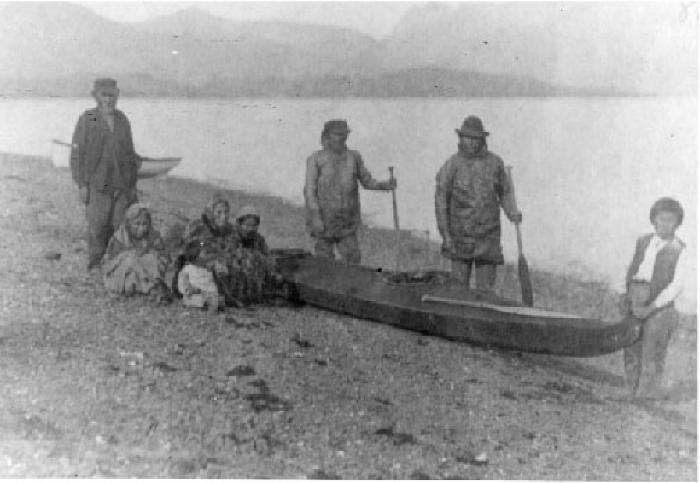Photograph, Picture — PatReitaq (N), PatRiitaq (S)

The world’s first photographs were taken in the 1830s when French scientist Louis Daguerre captured images on copperplates treated with silver and mercury. Twenty years later, in the 1850s, photography became popular in the United States with the invention of a less-expensive process that fixed images to glass or tin.
As Americans spread west, so did photography, recording picturesque landscapes and Native American communities. For those interested in history, these images are a valuable source of information. They illustrate traditional life and document the effects of western culture on Native societies. Photographs often preserve small details about the past that are not present in written accounts.
Scientists studying Alaska’s Native peoples and natural resources took some of the first photographs of the Kodiak Alutiiq people. In 1872, French anthropologist Alphonse Pinart took a small number of shots of Afognak and Kodiak. These may be the earliest photographs from the Kodiak archipelago. In 1889, Tarleton H. Bean, a fisheries biologist, took photos of Karluk as part of his study of Alaska salmon, and in the 1890s, the staff of the steamer Albatross, a vessel studying river systems, took photographs of Old Harbor.
These invaluable images demonstrate that although Alutiiq people had adopted western clothing, most families continued to live in traditional-style sod houses and travel by kayak at the onset of the twentieth century. However, these sod houses were not exactly like their prehistoric counterparts. Photographs show that Alutiiq people entered their homes through western-style hinged doors, rather than crawling in through the once-traditional entrance tunnel.
